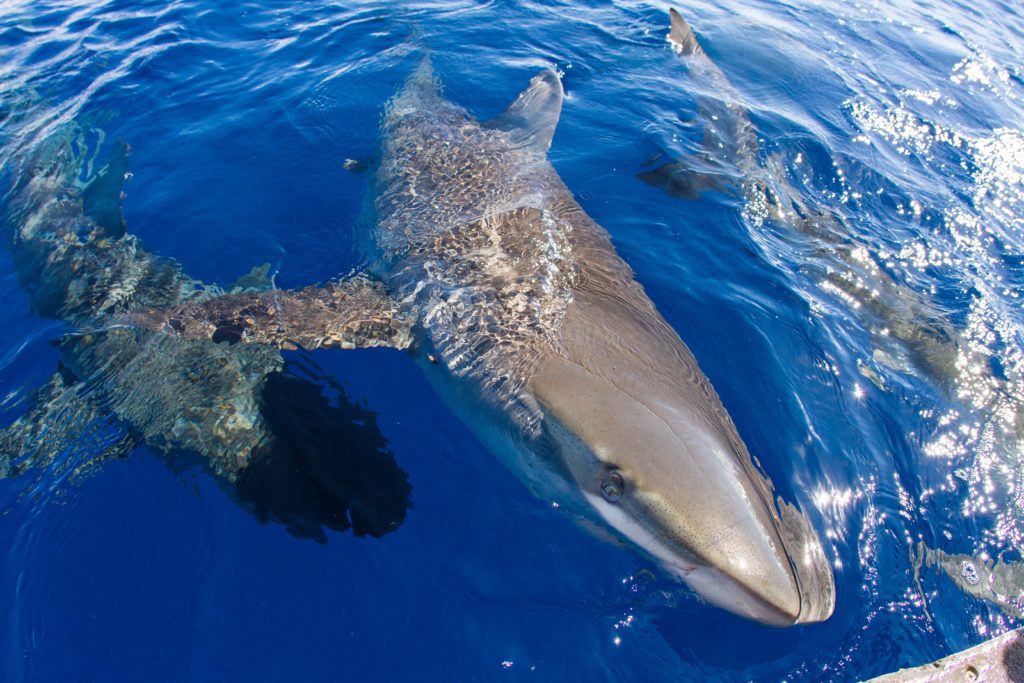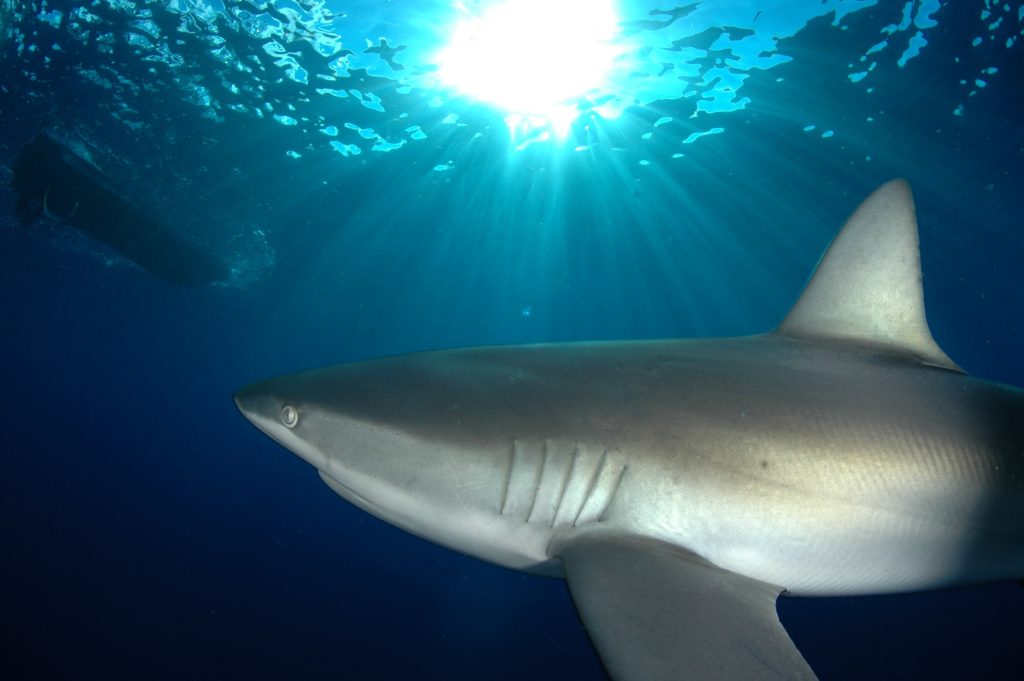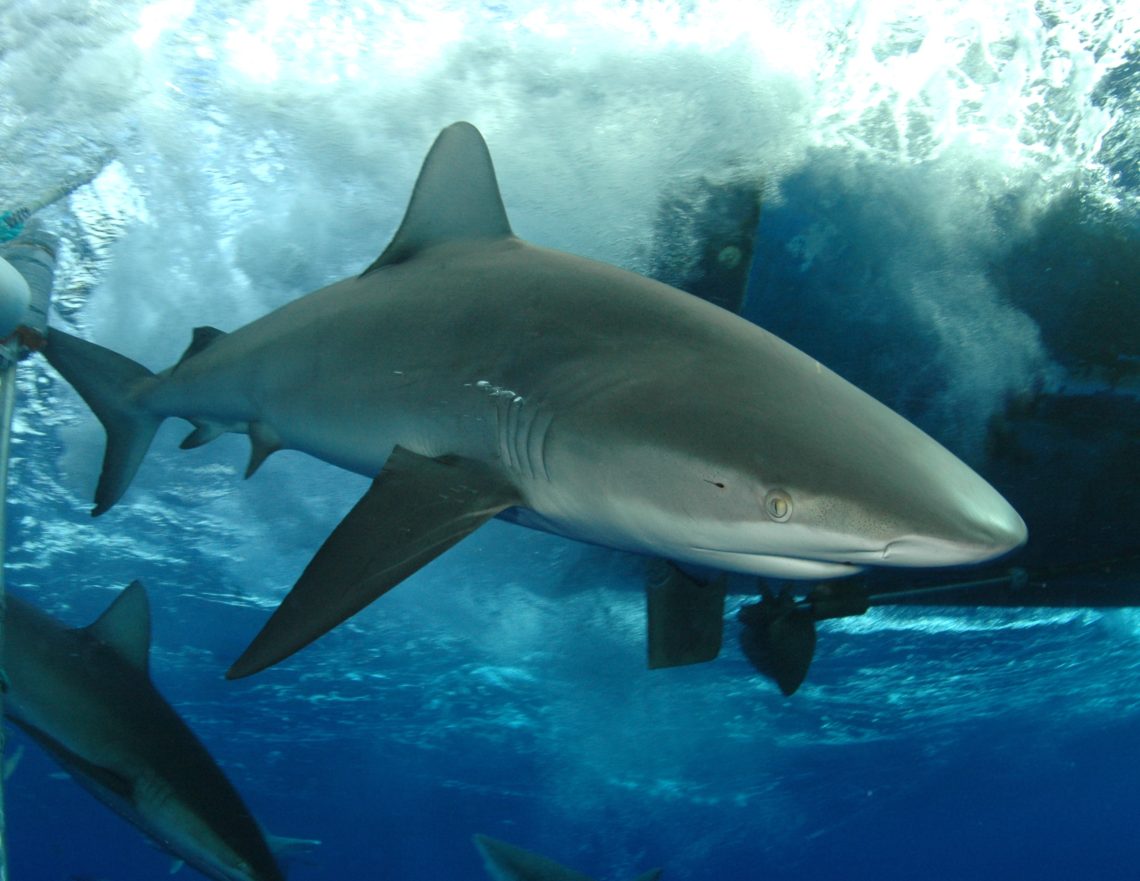The awesome folks at Hawaii Shark Encounter estimate that around 95% of the sharks that you see on their tours are Galapagos Sharks. These sharks are found worldwide and are part of the Requiem shark species. They tend to live around clear reef types of environments. Sometimes a school of these sharks can number in the hundreds. Some of the places they live at are the Atlantic Ocean, Bermuda, the Virgin Islands, Lord Howe Island, the Marianas Islands, the Hawaiian Islands, Baja California, Guatemala, eastern Australia and more.
They are fair big, usually somewhere around 9.8 feet. Although they have been known to be as larger as 11 feet. At that size, they will tip the scales at a weight nearing 430 pounds.
These sharks are active predators that are usually found in groups. Their main food source consists of bottom-dwelling bony fishes and cephalopods. Once they get larger in size, they are known to switch their diets to include marine iguana, sea lions, and even other sharks.

This species is more than capable of crossing the open ocean between islands and has been reported at least 31 mi from land. Juveniles seldom dive deeper than 82 ft, while adults have been reported to a depth of 590 ft.
Female Galapagos sharks will give birth to litters of between 4-16 pups every 2-3 years. The pups will stay in shallower water to avoid ending up as a snack for other larger sharks. These sharks are known to be cannibals.
Galapagos Sharks have a very unique ability. When needed, they can push their stomachs out through their mouths. This comes in handy if they ingest coral, rocks or garbage. They can just flip their stomachs out to dislodge whatever is bugging them and suck the stomachs right back in.
The Galapagos sharks have sadly found themselves on the near-threatened species list due to their slow reproductive rate and overfishing.

These sharks are known to have very bold personalities and can be aggressive towards humans at times. If you are unlucky enough to get a bite from one of these sharks, you will be at the mercy of 14 rows of teeth. The upper teeth are stout and triangular, while the lower teeth are much more pointy. All of the teeth have serrated edges. Even though they may show aggression, there have only been 6 bites reported in the Galapagos islands since 1900. None of the bites resulted in the loss of limbs or fatalities. The chances of an aggressive encounter are very small.
When confronted or cornered, the Galapagos shark may perform a threat display similar to that of the grey reef sharks. They perform an exaggerated, rolling swimming motion while arching their backs, lowering their pectoral fins, puffing out their gills, and gaping their jaws. The shark may also swing its head from side to side, to keep the perceived threat within its field of vision. If you see this, you should definitely back off and give them some space.
One of the features that you can use to identify these sharks is the dual dorsal fins. This first is a rather tall and sickle shaped. It is located over the pectoral fins rear edge. The second fin is much smaller and resides over the anal fin. Both fins are brownish in color with white towards the base.

Galapagos sharks are curious creatures. When something
Check out our blog about Shark Cage Adventure with Hawaii Shark Encounters for more information about encountering these awesome creatures.
Happy Adventuring. Don’t forget to follow us on Instagram, subscribe to our Youtube channel, and sign up for our newsletter!







One Comment
Pingback: